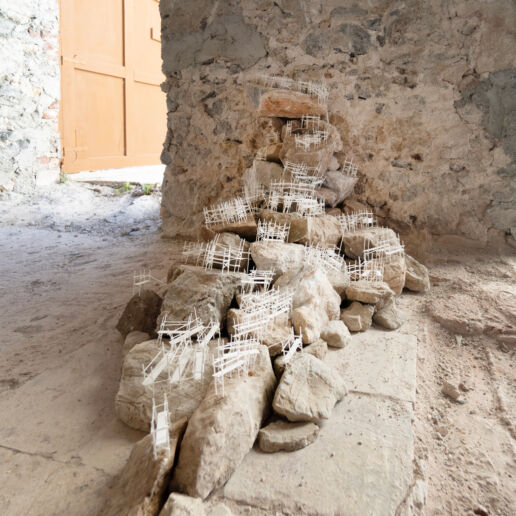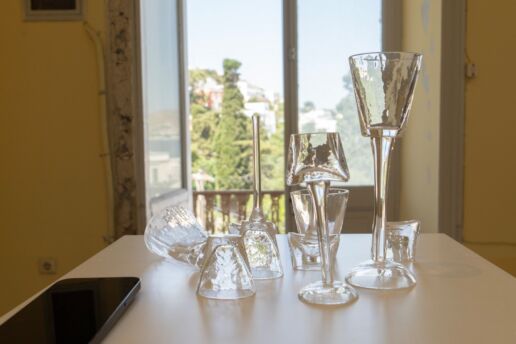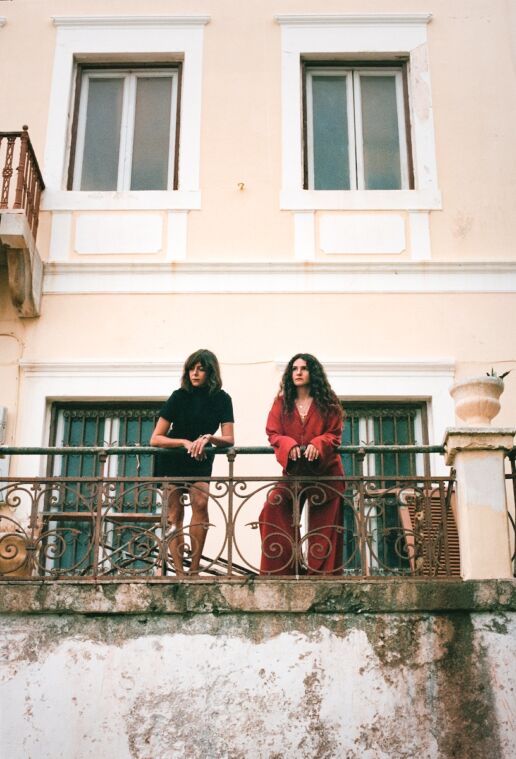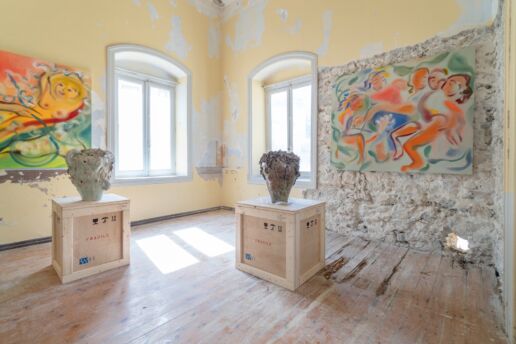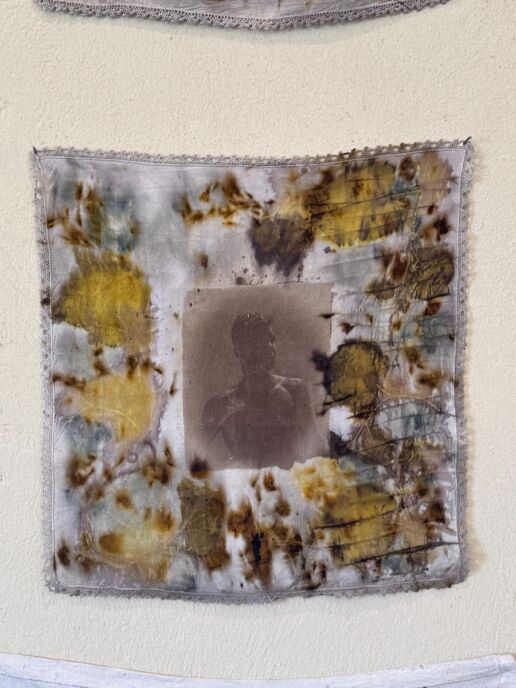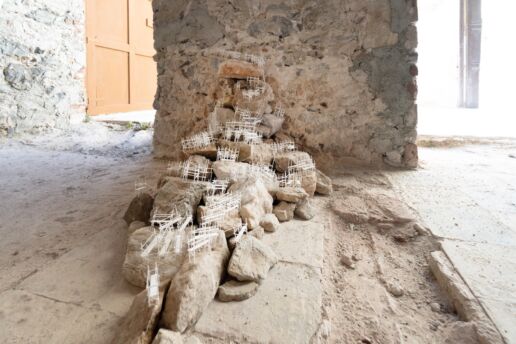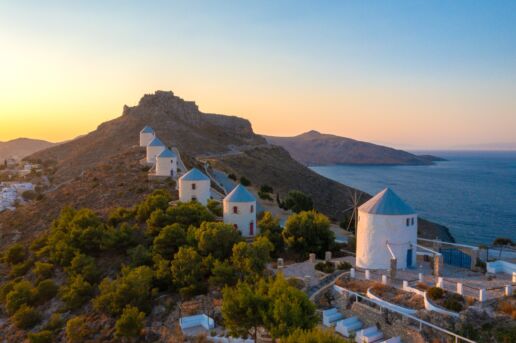PURSUING TIME AND WATER IN LEROS
‘All things become islands before my senses.’Islands transformed by emotions, as our own islets stand the test of time...Co-curators Burcu Fikretoğlu and Gizem Naz Kudunoğlu talk about their ‘All Things Become Islands Before My Senses’ exhibition at Perasma on the Greek island of Leros.
PAPER: You are back in Leros with your second exhibition after ‘Time is A Child.’ What brought you back here?
Burcu Fikretoğlu: We had been working on a Greek island project for a long time, which finally happened last year. The idea was to have a one-off event. It was a stressful process for many reasons. Whether geographical or sociological, the challenges we faced on the island made everything more intense and blocked. After the exhibition, it became clear that I would continue thinking about time, loneliness, friendship, and the challenges I experienced there. I was hoping to collaborate with my long-term friend Gizem Naz Kudunoğlu, and for this to be our first project is very special.
P: How would you describe Leros?
BF: The Greek island has a fascinating history. It changed hands between the Italians, Ottomans, Germans, and British, each leaving distinct marks, especially in architecture. At one point, it hosted a prison for political dissidents and later the notorious mental hospital that was known around the world. I was intrigued by the island’s diverse and multi-layered past.
The island is a tough nut to crack. It won’t simply surrender the Greek island aesthetics you are accustomed to. Only the patient and keen observer will see its true beauty. You could say this island is a little stubborn, and nothing comes easily. We all have a rhythm and know that attitudes have consequences. This is what determines our expectations.
Leros scraps the rulebook that defines our functioning. My experiences and friendships here have changed me profoundly.
P: Do you remember when you first saw the verse in Pavese’s poem that gave the exhibition its name? What made you choose this verse and poem?
Gizem Naz Kudunoğlu: Of course, such intense historical processes have much more significant social impacts. Pavese witnessed the atrocities of the world wars and defined the impact and isolation it uniquely left on the individual. I think the verse from Pavese’s Passion for Solitude perfectly defined the exhibition’s general conceptual approach. The idea that the human body, all other organisms, or inanimate objects can also become an island was very helpful in bringing together this year’s content.
P: Time was the focus of the first exhibition. Now, we have our own unique islands, our individualities. You manage to combine the main theme with history, mythology, and fantasy invariably. What happened on your own island for Perasma in the past year? How did you transform for this exhibition?
BF: The idea of time emerged simultaneously with the idea of holding an exhibition on an island. I wanted to focus on geographical time and how it passed on a small piece of land in the middle of the sea, even before we decided on Leros. A concept called ‘time in Leros’ popped up while we were preparing for the exhibition. I spent a long time on the island alone. I wanted to leave, but I couldn’t. I felt stuck. Time seemed to stop, but at the same, there was not enough of it. Once this period was over, the experience started to look different to me. Retrospectively, I now realize the incredible support I had during such a complicated process and the special friendships I made and transformed.
P: What was the most exciting and challenging about holding an exhibition on the island?
BF: It felt right to continue doing this despite the challenges we knew of. Collaborating with Gizem has taken this experience to a whole new level. Most of the problems we faced this year were due to the uncertainties and delays of being on a remote island and, in my opinion, the childishly insoluble side of Leros. The problems evolved into an experience we endured with Gizem.
P: What would you recommend besides the exhibition to someone visiting the island?
GNK: You must see the Aerofono (Parabolic Acoustic Mirror), a symbol of the island’s desire to communicate with the outside world. This year’s exhibition was constructed on the concept of giant ears trying to determine where the enemy is approaching from. One day, while out for a walk with Burcu, we imagined inviting Cevdet Erek to the exhibition and got excited thinking about how he would bond with this place. The center of Lakki town is fascinating with its cinema, church, agora, and clock tower. It’s as if the place is frozen in time. The abandoned old mental hospital in Lepida – the setting for many scenes in Goshka Macuga’s film – is a building with a lot of presence and a dark past. Hours fly by, wandering around it. But maybe that will be enough for one day. What happened there throughout its history is no less than compelling.
P: How did you choose the three main exhibition venues?
GNK: Most works are displayed in our main venue, Perasma Space. Lakki Primary School hosts Cevdet Erek’s installation, and the old Italian Barracks at Diapori hosts Necla Rüzgar’s work. The collection establishes a complex dialogue with the island’s stories of culture, trade, discovery, and conquest. Layers of history, mythology, fantasy, ghosts, and reality wash on the island like waves. In Perasma in Agia Marina, Pawel Althamer transforms the former Italian arms depot, repurposed as a Sailing Club, into a workshop for a month. Pawel will work on an installation with a group of local people and refugees from the nearby camp. The Primary School in Lakki, with its distinctly Italian architecture, includes a site-specific adaptation of Cevdet Erek’s installation ‘Seaside Sound Stage.’ We also published a Greek translation of the book of the same name. A former Italian military barracks, now covered with murals, features a painting installation by Necla Rüzgar, inspired by the murals there and the current function of the venue as a goat pen. We are also screening a film shot by Goshka Macuga in the mental hospital, produced in collaboration with Perasma.
Hosted at venues with a historical background, the group exhibition can be visited between 30 June and 18 August. Discover new and past works of more than seventeen international artists, including William Kentridge, Goshka Macuga, Cevdet Erek, Maryam Turkey, and Lindsey Mendick.


